- Home
- Albert Camus
Resistance, Rebellion, and Death Page 19
Resistance, Rebellion, and Death Read online
Page 19
In this way the manufacturers of art (I did not say the artists) of middle-class Europe, before and after 1900, accepted irresponsibility because responsibility presupposed a painful break with their society (those who really broke with it are named Rimbaud, Nietzsche, Strindberg, and we know the price they paid). From that period we get the theory of art for art’s sake, which is merely a voicing of that irresponsibility. Art for art’s sake, the entertainment of a solitary artist, is indeed the artificial art of a factitious and self-absorbed society. The logical result of such a theory is the art of little cliques or the purely formal art fed on affectations and abstractions and ending in the destruction of all reality. In this way a few works charm a few individuals while many coarse inventions corrupt many others. Finally art takes shape outside of society and cuts itself off from its living roots. Gradually the artist, even if he is celebrated, is alone or at least is known to his nation only through the intermediary of the popular press or the radio, which will provide a convenient and simplified idea of him. The more art specializes, in fact, the more necessary popularization becomes. In this way millions of people will have the feeling of knowing this or that great artist of our time because they have learned from the newspapers that he raises canaries or that he never stays married more than six months. The greatest renown today consists in being admired or hated without having been read. Any artist who goes in for being famous in our society must know that it is not he who will become famous, but someone else under his name, someone who will eventually escape him and perhaps someday will kill the true artist in him.
Consequently, there is nothing surprising in the fact that almost everything worth while created in the mercantile Europe of the nineteenth and twentieth centuries—in literature, for instance—was raised up against the society of its time. It may be said that until almost the time of the French Revolution current literature was, in the main, a literature of consent. From the moment when middle-class society, a result of the revolution, became stabilized, a literature of revolt developed instead. Official values were negated, in France, for example, either by the bearers of revolutionary values, from the Romantics to Rimbaud, or by the maintainers of aristocratic values, of whom Vigny and Balzac are good examples. In both cases the masses and the aristocracy—the two sources of all civilization—took their stand against the artificial society of their time.
But this negation, maintained so long that it is now rigid, has become artificial too and leads to another sort of sterility. The theme of the exceptional poet born into a mercantile society (Vigny’s Chatterton is the finest example) has hardened into a presumption that one can be a great artist only against the society of one’s time, whatever it may be. Legitimate in the beginning when asserting that a true artist could not compromise with the world of money, the principle became false with the subsidiary belief that an artist could assert himself only by being against everything in general. Consequently, many of our artists long to be exceptional, feel guilty if they are not, and wish for simultaneous applause and hisses. Naturally, society, tired or indifferent at present, applauds and hisses only at random. Consequently, the intellectual of today is always bracing himself stiffly to add to his height. But as a result of rejecting everything, even the tradition of his art, the contemporary artist gets the illusion that he is creating his own rule and eventually takes himself for God. At the same time he thinks he can create his reality himself. But, cut off from his society, he will create nothing but formal or abstract works, thrilling as experiences but devoid of the fecundity we associate with true art, which is called upon to unite. In short, there will be as much difference between the contemporary subtleties or abstractions and the work of a Tolstoy or a Molière as between an anticipatory draft on invisible wheat and the rich soil of the furrow itself.
II
In this way art may be a deceptive luxury. It is not surprising, then, that men or artists wanted to call a halt and go back to truth. As soon as they did, they denied that the artist had a right to solitude and offered him as a subject, not his dreams, but reality as it is lived and endured by all. Convinced that art for art’s sake, through its subjects and through its style, is not understandable to the masses or else in no way expresses their truth, these men wanted the artist instead to speak intentionally about and for the majority. He has only to translate the sufferings and happiness of all into the language of all and he will be universally understood. As a reward for being absolutely faithful to reality, he will achieve complete communication among men.
This ideal of universal communication is indeed the ideal of any great artist. Contrary to the current presumption, if there is any man who has no right to solitude, it is the artist. Art cannot be a monologue. When the most solitary and least famous artist appeals to posterity, he is merely reaffirming his fundamental vocation. Considering a dialogue with deaf or inattentive contemporaries to be impossible, he appeals to a more far-reaching dialogue with the generations to come.
But in order to speak about all and to all, one has to speak of what all know and of the reality common to us all. The sea, rains, necessity, desire, the struggle against death—these are the things that unite us all. We resemble one another in what we see together, in what we suffer together. Dreams change from individual to individual, but the reality of the world is common to us all. Striving toward realism is therefore legitimate, for it is basically related to the artistic adventure.
So let’s be realistic. Or, rather, let’s try to be so, if this is possible. For it is not certain that the word has a meaning; it is not certain that realism, even if it is desirable, is possible. Let us stop and inquire first of all if pure realism is possible in art. If we believe the declarations of the nineteenth-century naturalists, it is the exact reproduction of reality. Therefore it is to art what photography is to painting: the former reproduces and the latter selects. But what does it reproduce and what is reality? Even the best of photographs, after all, is not a sufficiently faithful reproduction, is not yet sufficiently realistic. What is there more real, for instance, in our universe than a man’s life, and how can we hope to preserve it better than in a realistic film? But under what conditions is such a film possible? Under purely imaginary conditions. We should have to presuppose, in fact, an ideal camera focused on the man day and night and constantly registering his every move. The very projection of such a film would last a lifetime and could be seen only by an audience of people willing to waste their lives in watching someone else’s life in great detail. Even under such conditions, such an unimaginable film would not be realistic for the simple reason that the reality of a man’s life is not limited to the spot in which he happens to be. It lies also in other lives that give shape to his—lives of people he loves, to begin with, which would have to be filmed too, and also lives of unknown people, influential and insignificant, fellow citizens, policemen, professors, invisible comrades from the mines and foundries, diplomats and dictators, religious reformers, artists who create myths that are decisive for our conduct—humble representatives, in short, of the sovereign chance that dominates the most routine existences. Consequently, there is but one possible realistic film: the one that is constantly shown us by an invisible camera on the world’s screen. The only realistic artist, then, is God, if he exists. All other artists are, ipso facto, unfaithful to reality.
As a result, the artists who reject bourgeois society and its formal art, who insist on speaking of reality, and reality alone, are caught in a painful dilemma. They must be realistic and yet cannot be. They want to make their art subservient to reality, and reality cannot be described without effecting a choice that makes it subservient to the originality of an art. The beautiful and tragic production of the early years of the Russian Revolution clearly illustrates this torment. What Russia gave us then with Blok and the great Pasternak, Maiakovski and Essenine, Eisenstein and the first novelists of cement and steel, was a splendid laboratory of forms and themes, a fecund unrest, a wild enthusiasm f
or research. Yet it was necessary to conclude and to tell how it was possible to be realistic even though complete realism was impossible. Dictatorship, in this case as in others, went straight to the point: in its opinion realism was first necessary and then possible so long as it was deliberately socialistic. What is the meaning of this decree?
As a matter of fact, such a decree frankly admits that reality cannot be reproduced without exercising a selection, and it rejects the theory of realism as it was formulated in the nineteenth century. The only thing needed, then, is to find a principle of choice that will give shape to the world. And such a principle is found, not in the reality we know, but in the reality that will be—in short, the future. In order to reproduce properly what is, one must depict also what will be. In other words, the true object of socialistic realism is precisely what has no reality yet.
The contradiction is rather beautiful. But, after all, the very expression of socialistic realism was contradictory. How, indeed, is a socialistic realism possible when reality is not altogether socialistic? It is not socialistic, for example, either in the past or altogether in the present. The answer is easy: we shall choose in the reality of today or of yesterday what announces and serves the perfect city of the future. So we shall devote ourselves, on the one hand, to negating and condemning whatever aspects of reality are not socialistic and, on the other hand, to glorifying what is or will become so. We shall inevitably get a propaganda art with its heroes and its villains—an edifying literature, in other words, just as remote as formalistic art is from complex and living reality. Finally, that art will be socialistic insofar as it is not realistic.
This aesthetic that intended to be realistic therefore becomes a new idealism, just as sterile for the true artist as bourgeois idealism. Reality is ostensibly granted a sovereign position only to be more readily thrown out. Art is reduced to nothing. It serves and, by serving, becomes a slave. Only those who keep from describing reality will be praised as realists. The others will be censured, with the approval of the former. Renown, which in bourgeois society consisted in not being read or in being misunderstood, will in a totalitarian society consist in keeping others from being read. Once more, true art will be distorted or gagged and universal communication will be made impossible by the very people who most passionately wanted it.
The easiest thing, when faced with such a defeat, would be to admit that so-called socialistic realism has little connection with great art and that the revolutionaries, in the very interest of the revolution, ought to look for another aesthetic. But it is well known that the defenders of the theory described shout that no art is possible outside it. They spend their time shouting this. But my deep-rooted conviction is that they do not believe it and that they have decided, in their hearts, that artistic values must be subordinated to the values of revolutionary action. If this were clearly stated, the discussion would be easier. One can respect such great renunciation on the part of men who suffer too much from the contrast between the unhappiness of all and the privileges sometimes associated with an artist’s lot, who reject the unbearable distance separating those whom poverty gags and those whose vocation is rather to express themselves constantly. One might then understand such men, try to carry on a dialogue with them, attempt to tell them, for instance, that suppressing creative liberty is perhaps not the right way to overcome slavery and that until they can speak for all it is stupid to give up the ability to speak for a few at least. Yes, socialistic realism ought to own up to the fact that it is the twin brother of political realism. It sacrifices art for an end that is alien to art but that, in the scale of values, may seem to rank higher. In short, it suppresses art temporarily in order to establish justice first. When justice exists, in a still indeterminate future, art will resuscitate. In this way the golden rule of contemporary intelligence is applied to matters of art—the rule that insists on the impossibility of making an omelet without breaking eggs. But such overwhelming common sense must not mislead us. To make a good omelet it is not enough to break thousands of eggs, and the value of a cook is not judged, I believe, by the number of broken eggshells. If the artistic cooks of our time upset more baskets of eggs than they intended, the omelet of civilization may never again come out right, and art may never resuscitate. Barbarism is never temporary. Sufficient allowance is never made for it, and, quite naturally, from art barbarism extends to morals. Then the suffering and blood of men give birth to insignificant literatures, an ever indulgent press, photographed portraits, and sodality plays in which hatred takes the place of religion. Art culminates thus in forced optimism, the worst of luxuries, it so happens, and the most ridiculous of lies.
How could we be surprised? The suffering of mankind is such a vast subject that it seems no one could touch it unless he was like Keats so sensitive, it is said, that he could have touched pain itself with his hands. This is clearly seen when a controlled literature tries to alleviate that suffering with official consolations. The lie of art for art’s sake pretended to know nothing of evil and consequently assumed responsibility for it. But the realistic lie, even though managing to admit mankind’s present unhappiness, betrays that unhappiness just as seriously by making use of it to glorify a future state of happiness, about which no one knows anything, so that the future authorizes every kind of humbug.
The two aesthetics that have long stood opposed to each other, the one that recommends a complete rejection of real life and the one that claims to reject anything that is not real life, end up, however, by coming to agreement, far from reality, in a single lie and in the suppression of art. The academicism of the Right does not even acknowledge a misery that the academicism of the Left utilizes for ulterior reasons. But in both cases the misery is only strengthened at the same time that art is negated.
III
Must we conclude that this lie is the very essence of art? I shall say instead that the attitudes I have been describing are lies only insofar as they have but little relation to art. What, then, is art? Nothing simple, that is certain. And it is even harder to find out amid the shouts of so many people bent on simplifying everything. On the one hand, genius is expected to be splendid and solitary; on the other hand, it is called upon to resemble all. Alas, reality is more complex. And Balzac suggested this in a sentence: “The genius resembles everyone and no one resembles him.” So it is with art, which is nothing without reality and without which reality is insignificant. How, indeed, could art get along without the real and how could art be subservient to it? The artist chooses his object as much as he is chosen by it. Art, in a sense, is a revolt against everything fleeting and unfinished in the world. Consequently, its only aim is to give another form to a reality that it is nevertheless forced to preserve as the source of its emotion. In this regard, we are all realistic and no one is. Art is neither complete rejection nor complete acceptance of what is. It is simultaneously rejection and acceptance, and this is why it must be a perpetually renewed wrenching apart. The artist constantly lives in such a state of ambiguity, incapable of negating the real and yet eternally bound to question it in its eternally unfinished aspects. In order to paint a still life, there must be confrontation and mutual adjustment between a painter and an apple. And if forms are nothing without the world’s lighting, they in turn add to that lighting. The real universe which, by its radiance, calls forth bodies and statues receives from them at the same time a second light that determines the light from the sky. Consequently, great style lies midway between the artist and his object.
There is no need of determining whether art must flee reality or defer to it, but rather what precise dose of reality the work must take on as ballast to keep from floating up among the clouds or from dragging along the ground with weighted boots. Each artist solves this problem according to his lights and abilities. The greater an artist’s revolt against the world’s reality, the greater can be the weight of reality to balance that revolt. But the weight can never stifle the artist’s solitary exigency. The loftiest wor
k will always be, as in the Greek tragedians, Melville, Tolstoy, or Molière, the work that maintains an equilibrium between reality and man’s rejection of that reality, each forcing the other upward in a ceaseless overflowing, characteristic of life itself at its most joyous and heart-rending extremes. Then, every once in a while, a new world appears, different from the everyday world and yet the same, particular but universal, full of innocent insecurity—called forth for a few hours by the power and longing of genius. That’s just it and yet that’s not it; the world is nothing and the world is everything—this is the contradictory and tireless cry of every true artist, the cry that keeps him on his feet with eyes ever open and that, every once in a while, awakens for all in this world asleep the fleeting and insistent image of a reality we recognize without ever having known it.

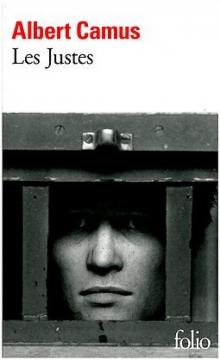 Les Justes
Les Justes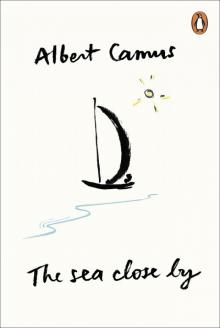 The Sea Close By
The Sea Close By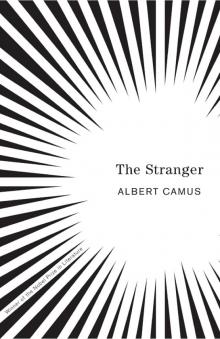 The Stranger
The Stranger The Rebel: An Essay on Man in Revolt
The Rebel: An Essay on Man in Revolt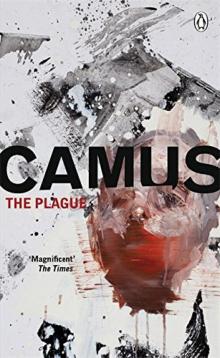 The plague
The plague A Happy Death
A Happy Death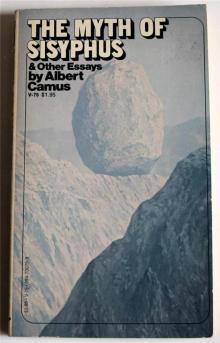 The Myth of Sisyphus and Other Essays
The Myth of Sisyphus and Other Essays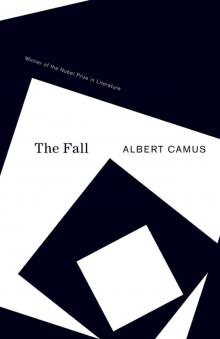 The Fall
The Fall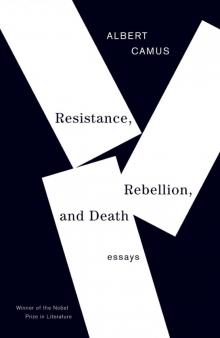 Resistance, Rebellion, and Death
Resistance, Rebellion, and Death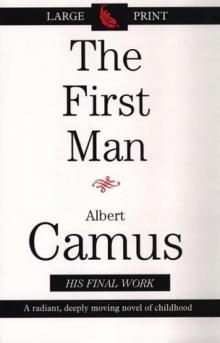 The First Man
The First Man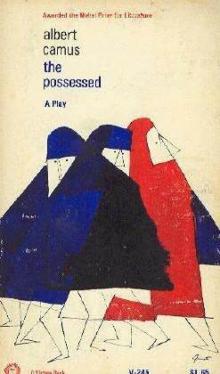 The Possessed
The Possessed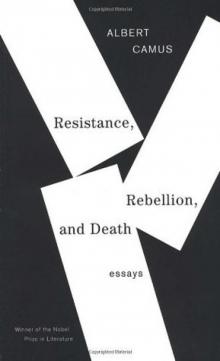 Resistance, Rebellion and Death: Essays
Resistance, Rebellion and Death: Essays